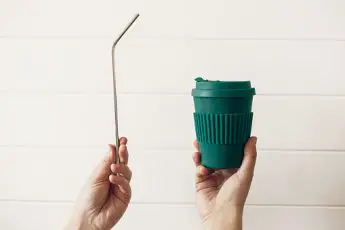Introduction
Quick Navigation
Environment safety and protection is a responsibility for all – not only for an agency to monitor or regulate. Everyone has a part to play to ensure that the world we live in is safe and habitable for terrestrial and marine life. Unfortunately, some people and some industries are sabotaging those willingly, trying to save our world from harm. One of those industries is that which deals with plastic production.
Plastics seem like one of the easiest things to dispose of; however, they are not biodegradable, making them unsafe for the environment. It is surprising that plastic products, such as straws, have drastically affected marine life over the past few years. Many marine animals were confirmed to have died of plastic waste consumption, affecting the environment in serious ways.
You may ask: how did these plastics come in contact with marine animals? It shouldn’t surprise you that waste management in different countries of the world has been poor. You will find some waste companies or industries that dispose of plastics in oceans. This action has cost many marine lives, and if care is not taken, the world may lose some incredible species of fish and other aquatic creatures.
Plastics, however, are divided into different groups or categories depending on their use(s). One popular type is single-use plastics, and a perfect example is a plastic straw. Since they are not biodegradable, they can only disintegrate into smaller particles called Microplastics (smaller than 5mm). Due to this disintegrated size, they become even more difficult to clean from the environment, in which they end up in the oceans of the world, causing pollution. These microplastics in the marine environment alter the natural ecosystem and eventually lead to the loss of lives.
What Can Be Done?
Plastic Straws or Single-use Plastics are difficult to maintain, and that leaves the world with three options – replace, reduce, or recycle. Not much effort has been put into recycling plastic straws, which leaves us with the other two effective options.
Reducing the use of plastic straws might work, but not everyone will get the memo. Some countries that have successfully enforced the ban on plastic straws include France, the UK, Taiwan, and New Delhi.
However, it is only best to replace and find other plastic straw alternatives for other countries that find it hard to curb this menace.
What are the Best Plastic Straw Alternatives?
Finding the perfect eco-friendly plastic straw alternatives will save our world. Below is a list of options that could be adopted.
Glass Straws
One easy-to-use plastic straw alternative is the glass straw. It seems somewhat delicate because the reputation of glass hasn’t exactly been in favor. However, glass straws are made from Borosilicate – a top-notch durability-enhancing material. Apart from the durability, this glass alternative is hypoallergenic and suitable for hot and cold drinks.
Glass Straws are perfect and safe to use in a microwave, dishwasher, or freezer; however, they can break under excessive pressure.
Silicone Straws
Another flexible straw option to use for drinks is Silicone. Although not many understand how this works, if there is something to know, the non-harmful food-grade nature is. Silicone straws are BPA-free, making them ideal for students, seniors, or disabled persons.
This soft straw alternative is dishwasher safe and can withstand extreme temperatures to a level; if you would like to reuse this durable straw, boiling works. The unfortunate thing is: this straw doesn’t exactly appear drink- or restaurant-friendly.
Copper Straws
Metal straws are also a thing, and they are divided into different groups depending on the metal in use. Copper is one of the popular choices because it is easy to use. However, copper straws are a bit delicate and need utmost care and maintenance. They should be stored properly against wear and tear and also corrosion.
Food-safe copper materials are great but are not dishwasher-safe, as you would expect them to be.
Paper Straws
A popular alternative that many restaurants have recently started using is Paper Straws. Even though they are different from plastic straws, they share similarities being single-use straws. This safe straw type decomposes faster, leaving a small footprint in the environment.
Since paper straws are not reusable, they are not dishwasher-friendly, i.e., poor durability. Also, their integrity reduces depending on the time they spend in the liquid. Furthermore, paper straws are not suitable for hot fluids.
Stainless Steel Straws
A reusable choice, however, in place of plastic straws is the stainless steel straw. It isn’t built for long-term use, but it can be used subsequent times until it loses potency. Stainless steel straws are durable and can retain heat; hence, they are suitable for hot and cold drinks.
This straw is available in different colors and sizes. Additionally, it comes in collapsible styles and carrying cases to be portable and easy to use, anywhere and anytime.
Polylactic Acid Straws
Corn as a renewable resource can be put to good use – one of them is in the production of Polylactic Acid Straws. This straw alternative is safe and flexible, and it comes either in wrapped or unwrapped styles. The only problem with this straw is that it can be confused with plastic straws.
Bamboo Straws
Another renewable resource like Corn is Bamboo. Likewise, single-use straws can be made out of bamboos to be used in the stead of plastics. Apart from their environment-friendly nature, they are easy to use. Unfortunately, bamboo straws are hard to clean and only suitable for cold fluids.
Sip Lid Cups are also good, safe alternatives to use instead of plastic straws.
Read here on how to combat Ocean Plastics.
Conclusion
The essence of this specialist guide to plastic straw alternatives is to make everyone conscious of their environment and how low maintenance can affect lives – terrestrial and aquatic. Getting rid of plastic straws and replacing them with better, safe alternatives is one step to eliminating the effects of plastics on the environment. Ocean plastics are one of the major problems today and using every available method to tackle it is consequential.

